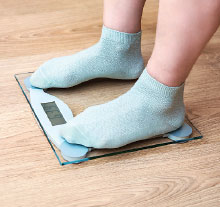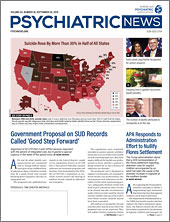Women With PTSD Benefit from Single- or Mixed-Gender Group Therapy
Female veterans with posttraumatic stress disorder (PTSD) enrolled in group therapy show similar clinical improvements whether they are in mixed but predominantly male groups or female-only groups, according to an observational study from investigators at Yale University.
However, female veterans in women-only programs did tend to be more committed to their therapy, the investigators noted in the Journal of Traumatic Stress.
The team at Yale collected data from 1,357 female veterans who participated in an intensive Veterans Health Administration PTSD treatment program between 1993 and 2011. Of the participants, 888 were enrolled in mixed-gender groups, and the remaining 469 were in women-only groups. All the participants received structured clinical assessments upon enrolling and four months after program discharge.
On average, the veterans in the women-only groups had lower PTSD symptom severity upon starting the treatment program. After adjusting for this difference, the investigators identified no difference in improvements between the two groups, whether for overall PTSD severity or for individual symptoms like numbness or irritability. There was also no difference in the severity of alcohol or substance use problems.
The participants in the women-only groups, however, showed a higher rate of program completion than mixed-gender groups (69.5% vs. 60.7%, respectively), were rated by the therapists as being more committed to therapy, and were more likely to participate in the post-discharge assessment.
Despite limited access to data on additional therapies and the use of an outdated self-report measure, the Yale team recommended additional research to identify gender-specific factors that may enhance PTSD treatment among female veterans.
Metabolic Problems of Bipolar Disorder Can Begin in Adolescence
Metabolic syndrome, a cluster of problems encompassing raised blood pressure, high blood sugar, high triglycerides, low HDL cholesterol (the “good” cholesterol), and obesity, is common among adults with bipolar disorder. Now, investigators from the University of Toronto and colleagues report that these metabolic problems are already prevalent in adolescents with bipolar disorder.
“This phenomenon calls for the need to implement early screening, prevention, and intervention strategies for [metabolic syndrome] and its components,” the investigators wrote in the Journal of Clinical Psychiatryitalic>.
The findings come from an analysis of 162 adolescents and young adults aged 13 to 28 years who had participated in the Course and Outcome of Bipolar Youth (COBY) study as children.
The investigators found that 19.8% of the participants met the criteria for metabolic syndrome, and nearly 80% had at least one metabolic problem, with poor HDL cholesterol being the most common issue. The nearly 20% prevalence of metabolic syndrome was significantly higher than the 5.5% prevalence estimated for youth in the general population.
The use of antimanic or antipsychotic medications was not associated with the increased risk of metabolic syndrome. However, youth with metabolic syndrome were more likely to have depressive symptoms and/or had taken antidepressants in the previous six months.
“Although antidepressants have been associated with weight gain, there is less evidence that modern antidepressants confer meaningfully increased risk of [metabolic syndrome],” the authors wrote. “Future studies are warranted to evaluate … the link between [metabolic syndrome] and depression in youth and young adults.”
Stricter Legislation Associated With Fewer Pediatric Firearm Deaths
A recent analysis suggests that state-level gun laws such as universal background checks for the purchase of firearms or ammunition reduce overall firearm-related mortality. A study appearing in Pediatrics now extends these data and shows that this reduced firearm mortality applies to children.
Researchers at Children’s National Health System in Washington, D.C., and colleagues used an online Centers for Disease Control and Prevention database to assess U.S. pediatric firearm-related deaths between 2011 and 2015. State-level deaths were compared with that state’s “gun law” score based on the presence or absence of 33 different gun policies.
The final gun law scores for the states ranged from 1 to 121, with higher scores equating to stricter gun control laws. The researchers found that for every 10-point increase in the state’s gun law score, the firearm-related mortality rate in children dropped by 4%—even after factoring in state-level differences in socioeconomic factors and gun ownership rates.
The seven states that had longstanding laws requiring universal background checks for firearm purchases (in effect prior to 2011) had a 35% reduced pediatric firearm mortality rate compared with states without such laws.
“The findings of this study build on previous literature and help provide compelling data that an evidence-based, data-driven, public health approach to firearm legislation may be successful in reducing firearm-related injury in children,” the authors wrote.
Dark Chocolate Associated with Reduced Risk of Depression
A study published in Depression and Anxiety adds to the evidence that chocolate may have mood-elevating properties. Using data from the biannual National Health and Nutrition Examination Survey (NHANES), researchers found that eating chocolate, particularly dark chocolate, may reduce the risk of developing depressive symptoms.
An international team of researchers analyzed data from 13,626 adults who participated in the NHANES between 2007 and 2008 and between 2013 and 2014. In addition to a comprehensive dietary assessment, the NHANES includes a nine-item Patient Health Questionnaire (PHQ) for self-reporting of depressive symptoms. For this study, a PHQ score of 10 or higher indicated “clinically relevant” depressive symptoms.
The researchers calculated that those who reported eating the most chocolate (104 grams/day to 454 grams/day) were 57% less likely to report clinically relevant depressive symptoms than adults who ate no chocolate.
This association seemed to be driven by dark chocolate consumption. Adults who ate any dark chocolate were 70% less likely to report clinically relevant depressive symptoms than adults who did not eat any chocolate. There was no association between eating non-dark chocolate and depressive symptoms.
The researchers made sure to adjust the results for a range of possible competing factors including income, physical activity, weight, alcohol consumption, and eating other sugary foods.
Social Media Often Used While Under the Influence
A new report from New York University researchers found that many young adults with a history of substance use text or post on social media platforms like Instagram and Snapchat while under the influence of drugs, often with subsequent regret.
The findings, published in Substance Abuse, come from a survey of 872 adults aged 18 to 40 years who attended electronic dance parties in New York City and reported either current or past drug use. The results showed that 34.3% posted on social media while high (with 21.4% later regretting it), 55.9% texted or called someone while high (with 30.5% regretting it), and 47.6% posed in a photo while high (with 32.7% regretting it).
Females and young adults aged 18 to 24 years were more likely to engage in these behaviors than males and young adults older than 24, particularly the use of social media. Also, people who used marijuana or cocaine were more likely to engage in social communication than those who used ecstasy or ketamine.
“Risky social media posts, including those showing people high on drugs, have the potential to cause embarrassment, stress, and conflict for users and those in their social networks,” said study co-author Joseph Palamar, Ph.D., M.P.H., in a press release. “It can also have adverse implications for one’s career, since the majority of employers now use social media platforms to screen job candidates and may search for evidence of substance use.”
Schizophrenia Disrupts Daily Rhythm of Many Genes
Many genes naturally turn on and off at distinct times during a day as part of a rhythmic, 24-hour cycle. A study from researchers at the University of Pittsburgh School of Medicine has now found that this genetic rhythm is highly disrupted in the brains of people with schizophrenia, with many genes either gaining or losing their 24-hour clock.
These findings, reported in Nature Communications, could impact current and future genetics studies since the time of day that samples are collected can alter which genes appear abnormal in expression.
The researchers analyzed gene expression profiles using brain tissue from 46 people with schizophrenia and 46 matched controls. The researchers were able to assess how gene expression changed over the course of a day because they knew the time of death for each of their 92 samples.
The researchers identified 708 genes in patients with schizophrenia and 707 genes in the controls that showed a 24-hour rhythm. However, only 31 genes had the same 24-hour rhythm in both patients and controls.
In the schizophrenia samples, genes linked to the immune system were the genes most likely to lose their rhythm compared with controls. Also, many of the genes that gained a 24-hour rhythm, compared with controls, were genes involved in brain function pathways that have been previously identified as disrupted in schizophrenia; in most cases, these genes had reduced expression at night.
The authors noted it would be interesting to see if schizophrenia leads to other changes in gene expression that are not tied to the 24-hour rhythm. ■






